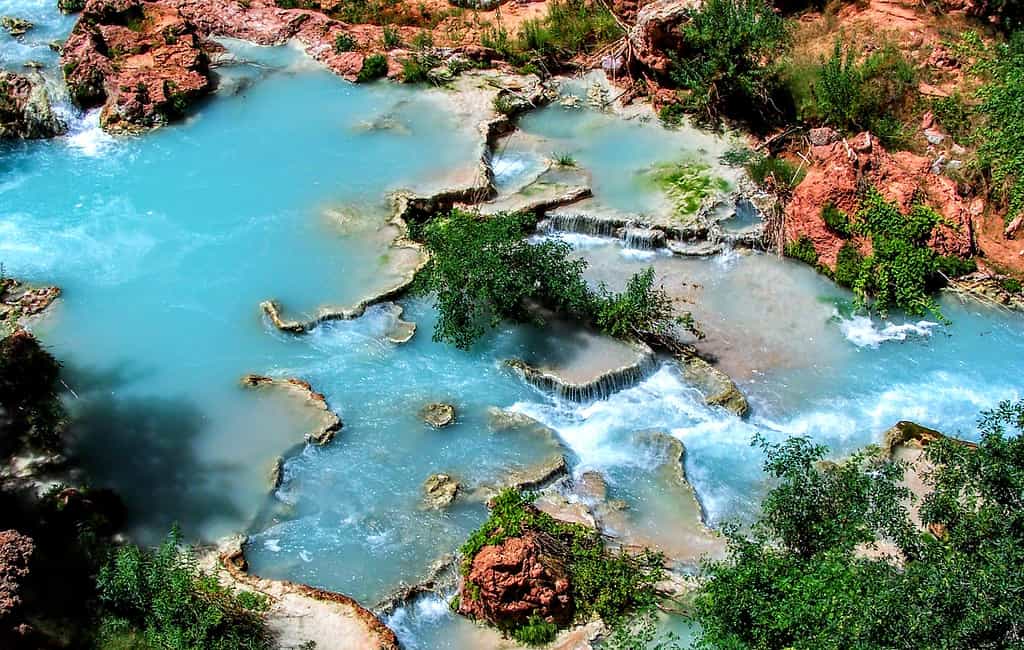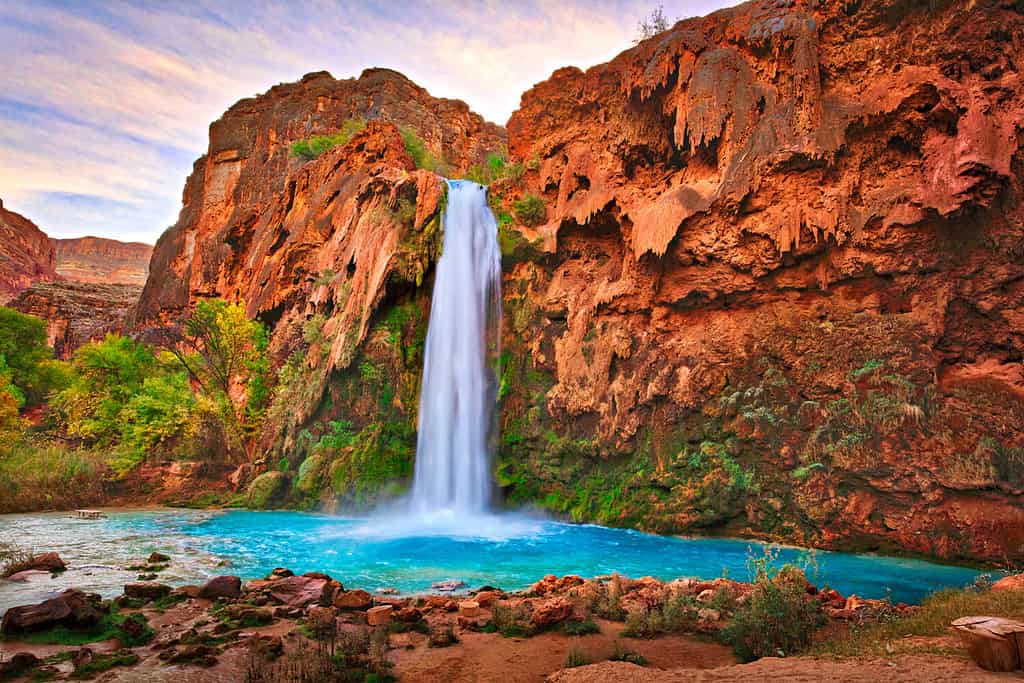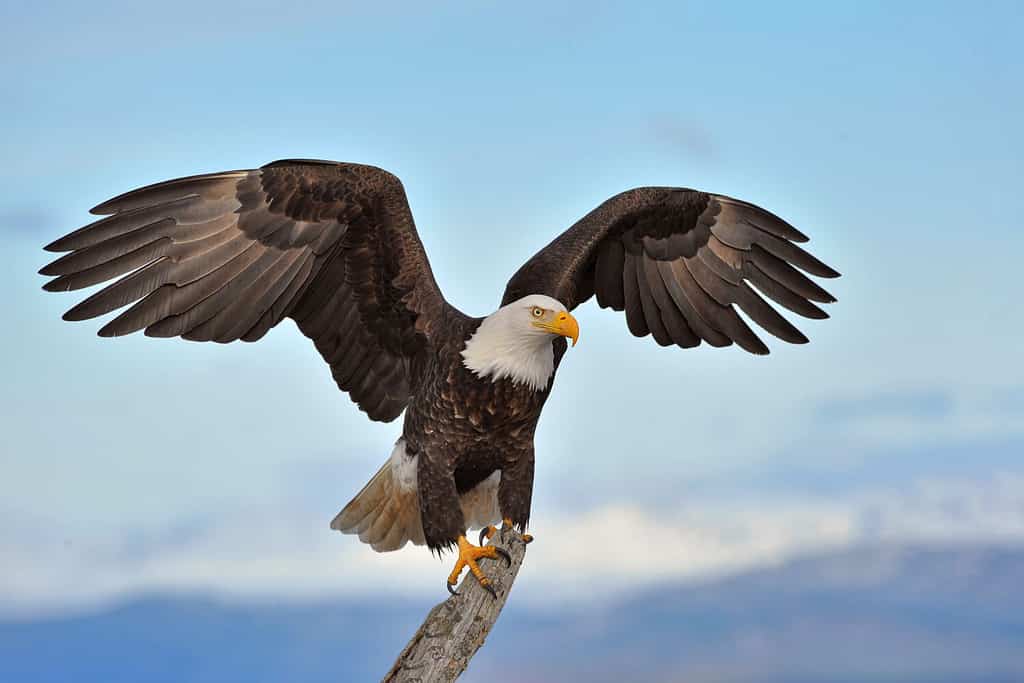Hidden within the majestic Grand Canyon, a hidden gem awaits those who seek unparalleled natural beauty and breathtaking serenity. Havasu Falls, an ethereal oasis nestled deep within the Havasupai Indian Reservation, stands as a testament to the wonders of Mother Nature. With its vibrant turquoise waters cascading gracefully down towering rust-colored cliffs, Havasu Falls has captivated the hearts and minds of adventurers and nature enthusiasts alike.
In this article, we invite you on a journey to uncover the secrets of Havasu Falls. Let’s delve into its rich history, remarkable geology, and the awe-inspiring experience it offers to intrepid travelers. Whether you are an avid hiker, a passionate photographer, or simply yearn to immerse yourself in the unspoiled wonders of nature, Havasu Falls promises an unforgettable escapade.
The History and Culture of Havasu Falls
Havasu Falls, which is located deep inside the Grand Canyon, is alluring not just because of its natural beauty but also because of its long history of interaction with the native populations that have lived there for millennia. The falls, known as Havasu `Baaja by the Havasupai Tribe, offer nourishment, spirituality, and a link to their ancestral land. It is an essential component of their cultural history.
Ancient Origins
Havasu Falls has a long history extending back thousands of years. There are at least 800 years of documented human occupancy in the area. The Hualapai people, forerunners of the Havasupai Tribe, were the Grand Canyon’s first occupants. They moved nearby, creating a thriving and self-sustaining community after realizing the abundance of resources the falls afforded.
Cultural Significance
Havasu Falls is much more than just a natural beauty to the Havasupai people. It is a sacred location with a rich spiritual meaning. The Havasu ‘Baaja, also known as the blue-green water people, who are said to be the keepers of the tribe’s water and land, are said to reside in the falls and the area around them. The falls are revered as a point of entry between the material and spiritual worlds. It is a site for rituals and the fostering of ties to ancestors.
The Importance of Water
The Havasupai Tribe has traditionally placed a high value on water. Havasu Falls is an essential supply of water for survival in the desert environment. The Havasu ‘Baaja have long been the responsible custodians of these waterways. They use sustainable methods to guarantee the falls’ availability and preservation. The tribe’s way of life is supported by the falls and its surrounding streams and pools, which also offer drinking water and a complex environment that supports flora, fauna, and agricultural operations.
Challenges and Resilience
The Havasupai Tribe has had several difficulties throughout its history, including encroachment on their territory, forced migration, and disturbance of their way of life. They have maintained their links to Havasu Falls and their cultural heritage in the face of adversity. The tribe still asserts its sovereignty over the territory. They uphold its rights and preserve its spiritual and cultural links to this revered location.
Preservation and Tourism
Havasu Falls has established itself as a popular tourist attraction in recent years, drawing tourists from all over the world. Although tourism has given the Havasupai Tribe some economic benefits, it has also brought difficulties in controlling its environmental effect and upholding the region’s traditional integrity. To guarantee sustainable tourist activities and safeguard the natural and cultural legacy of Havasu Falls, the tribe has put in place rules and regulations.

Havasu Falls (pictured) is a popular tourist spot, but visitors will need to purchase the proper permits ahead of their visit to spend time near the falls.
©iacomino FRiMAGES/Shutterstock.com
Geology and Geography of Havasu Falls
Havasu Falls, with its cascading turquoise waters and stunning travertine formations, owes its captivating beauty to the remarkable geology and geography that shape its surroundings.
Formation and Geological Forces
Havasu Falls owes its existence to Havasu Creek, a tributary of the Colorado River, which flows through the Havasupai Indian Reservation in the Grand Canyon. The falls were formed over thousands of years through a combination of tectonic activity, erosion, and deposition. The region lies within the Kaibab Limestone formation, which dates back to the Permian Period, approximately 250 million years ago.
As water from Havasu Creek flows over the limestone cliffs, it interacts with dissolved calcium carbonate in the rock, leading to the deposition of travertine. Layer by layer, this mineral-rich sediment builds up, creating the striking terraced formations that give Havasu Falls its distinctive appearance.
A Unique Coloration
One of the most enchanting aspects of Havasu Falls is its brilliant turquoise waters. The vibrant color is the result of a fascinating interplay of geological and biological factors. The high concentration of calcium carbonate in the water gives it a milky appearance. The presence of algae and other microorganisms contributes to the vivid blue-green hue. The sunlight filtering through the limestone cliffs further enhances the ethereal quality of the falls, creating a mesmerizing visual spectacle.
The Surrounding Landscape
Havasu Falls is nestled within the awe-inspiring landscape of the Grand Canyon, offering a breathtaking contrast between the vibrant blue waters and the rust-colored cliffs. The surrounding area is characterized by towering canyon walls, carved by the erosive power of Havasu Creek over millions of years. The towering cliffs of the Supai Group, comprised of sandstones, limestones, and shales, provide a stunning backdrop to the falls, adding to their dramatic allure.
Apart from the falls themselves, the region boasts numerous other natural wonders. Mooney Falls, located just downstream from Havasu Falls, is a majestic 196-foot waterfall, plunging into a hidden pool surrounded by towering cliffs. Further downstream, Beaver Falls offers a series of smaller cascades and pools, inviting visitors to explore and discover hidden gems within this breathtaking landscape.
Havasu Falls stands as a testament to the geological marvels that have shaped the Grand Canyon and captivated the hearts of visitors. Its formation through the interplay of water, limestone, and time showcases the enduring power of natural forces. The unique coloration of the falls, contributed by the interplay of minerals and microorganisms, adds an ethereal quality to this already awe-inspiring spectacle. As visitors stand in awe of Havasu Falls and immerse themselves in its surrounding landscape, they witness the wondrous beauty that arises from the harmonious interplay between geology and nature’s artistic brushstrokes.

Beaver Creek Falls (pictured) is another geological wonder found on the Havasupai reservation that can be visited along with Havasu Falls.
©iStock.com/Jeremy Christensen
Visiting Havasu Falls
It’s very important to carefully plan your trip if you want to experience Havasu Falls on your next vacation. It’s vital to know some key best practices to help you in navigating the details of permits, hiking routes, camping, and other crucial elements.
Reservations and Permits
Permits are required to visit Havasu Falls since access is limited to safeguard the ecosystem’s fragility and provide a positive tourist experience. The Havasupai Tribe is in charge of issuing the permits, which may be requested by visiting their official website. Since there are few permits available and demand is strong, it is essential to obtain your permissions well in advance. Keep in mind that each guest needs their permit, which cannot be transferred.
Hiking Trails and Difficulty
There are two main path alternatives for the spectacular journey through the Grand Canyon necessary to reach Havasu Falls. The first is the 10-mile Havasu Falls Trail. It begins on the Hualapai Hilltop and winds its way down into the canyon. The Mooney Falls Trail, which starts at the campsites close to Havasu Falls and leads you farther downstream. Taking you past Mooney Falls and finally to Beaver Falls, as a second choice. Both routes are challenging yet provide beautiful vistas. Be ready for areas requiring the use of ladders and chains, small walkways, and steep descents. It’s important to evaluate your level of fitness and pick a path that fits your ability.
Camping and Accommodations
Visitors in Havasu Falls’ main accommodation option is camping. Near Havasu Falls, the Havasupai Tribe has a campground where you may pitch a tent and take in the magnificent landscape. Due to limited availability, bookings for camping should be made in advance. You must bring your camping materials, such as tents, sleeping bags, and cooking equipment, even though the park offers basic facilities like picnic tables and portable toilets.
Water and Supplies
It’s essential to pack enough water and supplies for your trip and stay at Havasu Falls. The area’s dry climate can impact dehydration. Make sure to pack extra potable water for the duration of your trip. The water from the falls is unfit for drinking. Pack light, nourishing meals as well as sunscreen, a hat, and a pair of comfortable hiking shoes. If you intend to replenish your water bottles from natural sources, it is advised to bring a water filter device or purification tablets.

While the water of Havasu Falls (pictured) might look blue and very clean, one needs to bring a water filtration device if you plan to drink from the falls.
©LHBLLC/Shutterstock.com
Viewpoints and Vantage Points
There are several vantage points and points of view from which you may see Havasu Falls once you get there. The most well-liked location is near the foot of the falls. You can get a close-up view of the turquoise waters flowing. You may also reach Mooney Falls, a massive waterfall with amazing views from both its top and bottom, by taking a little stroll downstream. Beaver Falls, a collection of lesser falls and ponds that each provide a distinctive viewpoint, are located further downstream. Explore these many vantage points at your own pace while you take in the breathtaking scenery that surrounds Havasu Falls!
Wildlife and Ecology of Havasu Falls
Havasu Falls, with its lush vegetation and vibrant waters, is not only a mesmerizing natural wonder but also a haven for a diverse range of wildlife. Many different types of animals inhabit the area, including birds, mammals, and reptiles. There are also unique adaptations these creatures have developed to survive in the desert environment surrounding Havasu Falls.
Avian Residents
Birdwatchers will delight in the variety of avian species found around Havasu Falls. The desert oasis attracts both migratory and resident birds, creating a rich tapestry of colors and melodies. Look out for the iconic California Condor soaring overhead, their massive wingspan a sight to behold. The colorful Vermilion Flycatcher, with its striking red plumage, flits among the foliage. The elusive Canyon Wren enchants with its melodic song. Other notable species include the Cooper’s Hawk, Black-throated Sparrow, and the majestic Bald Eagle, which can occasionally be spotted in the area.

Bald eagle (pictured) sightings are rare around Havasu Falls, but certainly not impossible.
©FloridaStock/Shutterstock.com
Mammals of the Desert
Though the desert landscape may seem inhospitable, numerous mammals have adapted to thrive in the vicinity of Havasu Falls. The agile Desert Bighorn Sheep navigate the cliffs with ease, their impressive horns a symbol of their resilience. Keep an eye out for the elusive Kit Fox. It is a small carnivore known for its exceptional digging skills, creating intricate burrows in the sandy soil. The Greater Roadrunner, made famous by cartoons, scampers across the desert floor in search of prey. The Western Pipistrelle Bat emerges at dusk, gracefully gliding through the night skies in search of insects.
Surviving in Harsh Conditions: Unique Adaptations
The animals of Havasu Falls have evolved remarkable adaptations to cope with the challenging desert environment:
- Nocturnal Lifestyle – To avoid the scorching heat, many animals have adapted to become nocturnal. They seek shelter during the day and emerge to forage at night. This adaptation helps them conserve energy and avoid dehydration.
- Water Conservation – Desert-dwelling creatures have developed various strategies to minimize water loss. The Kangaroo Rat, for instance, has highly efficient kidneys that enable it to extract and conserve water from its food. This reduces the need for external water sources.
- Thermoregulation – Animals in the desert face extreme temperature fluctuations. Reptiles such as the Desert Spiny Lizard and the Western Diamondback Rattlesnake regulate their body temperature by basking in the sun during cooler hours. They then seek shade during the hottest parts of the day. Their scales and skin help prevent water loss and protect them from the intense desert sun.
- Camouflage – Many desert animals possess excellent camouflage, blending seamlessly with their surroundings to avoid detection by predators or prey. The Desert Cottontail Rabbit, for example, boasts a sandy brown coat that matches the desert floor. The Gila Monster’s mottled skin helps it blend in with the rocks and debris.
Havasu Falls is Worth a Visit!
Havasu Falls is not only a feast for the eyes but also a thriving ecosystem. Wildlife has adapted to the harsh desert environment. From the majestic birds that grace the skies to the resilient mammals and reptiles that call this oasis home, each species has developed unique traits to survive and thrive. Exploring the diverse fauna of Havasu Falls offers a glimpse into the remarkable resilience and ingenuity of nature in adapting to its surroundings. As you venture into this desert oasis, keep an eye out for these incredible creatures. Marvel at the adaptations that allow them to thrive in this extraordinary habitat.
There’s so much to love about this incredible natural wonder. From its long history with the native tribes that care for and protect the falls to its incredible ecosystem of flora and fauna, there is no place quite like Havasu Falls in the world. If you find yourself visiting the Grand Canyon or taking a road trip through Arizona, it is worth getting the proper permits ahead of time to be able to stop by the incredible Havasu Falls.
The photo featured at the top of this post is © LHBLLC/Shutterstock.com
Thank you for reading! Have some feedback for us? Contact the AZ Animals editorial team.






